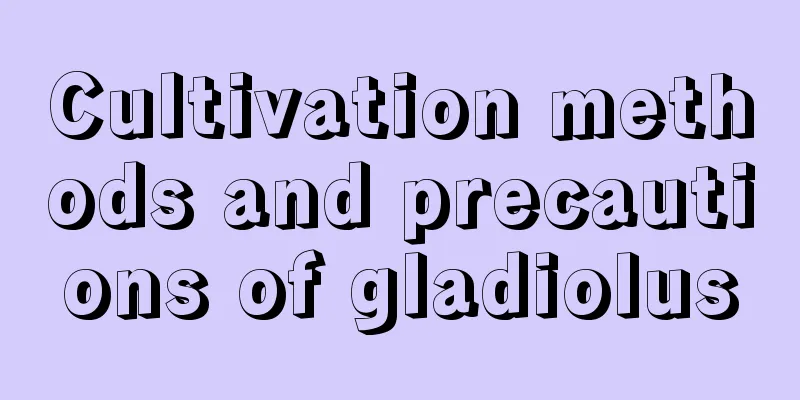Cultivation methods and precautions of gladiolus

1. Maintenance methods1. Temperature: The most suitable temperature for gladiolus is 20 to 25 degrees. Within this range, it is more suitable for flowering and growth. Because of its excellent high temperature resistance, it generally does not need to be adjusted in summer. However, it has poor cold resistance, so it needs to be adjusted in winter, and it is best to keep the temperature above ten degrees. 2. Light: It is a light-loving plant and a long-day plant. Therefore, you must place it in a well-lit area to ensure its growth and abundant flowering. However, when encountering strong light in the summer, appropriate shielding is also needed. 3. Watering: It needs more water during the growth period. When growing rapidly, keep it slightly moist. When it is very hot in summer, you can water it once a day. In winter, do the opposite and control water as much as possible. 4. Soil: It has high requirements on soil, including the amount of nutrition, drainage and air permeability. Using sandy soil will give better results. 2. Breeding techniques1. Reproduction: Mainly by bulb division. It is most suitable in spring. Pick a disease-free, lush bulb, then prepare a sharp knife and cut it into pieces. Each part must have a place where a heel can grow. After cutting, apply some wood ash on it. Then dry them and you can plant them. 2. Repotting: Since it has relatively high requirements for soil quality, it is best to repot once a year. If the soil is not caked, it can be replaced every two years. Sandy soil can also be used as a new substrate. If conditions permit, some basal fertilizer can also be added. 3. Problem diagnosis and treatment1. Disease: There may be "Penicillium mold rot". To prevent this disease, soak the seeds in potassium permanganate solution before planting. 2. Pests: The most common pests are "nematodes". When spraying pesticides, the soil must also be disinfected. In addition, there is the "green beetle", both its adults and larvae are harmful. You can use pesticides and apply some fertilizer in moderation. IV. Other issues1. Flower language: There are many flower language explanations. However, overall it is positive. For example, there is "love", "longevity", "happiness and fortune", etc. 2. Can it be kept at home: Yes. It is highly ornamental and has good meaning. |
<<: The cultivation methods and precautions of Frost Chao
Recommend
How to prepare the nutrient soil for Jade Plant (What fertilizer is suitable for Jade Plant to grow fast)
What soil is best for growing Jade Plants? As a p...
The difference between cinnamon and cinnamon
1. Difference of blades The leaves of cinnamon ar...
How to plant coral vine seeds
1. Where do seeds come from? If you want to plant...
The language and meaning of the wine bottle orchid, and what are the taboos for giving it as a gift?
1. Flower language and meaning The stem of the bo...
Strawberry planting and harvesting time
Strawberry planting time Strawberries are usually...
List of 9 common poisonous flowers in home gardening
Poinsettia Poinsettia stems and leaves release to...
How often should gardenia be watered in summer?
How often should gardenia be watered in summer? G...
Soybean Growth Conditions and Characteristics
Soybean Growing Conditions Soybean is a short-day...
It is better to water the Phoenix bamboo every few days.
How often should I water the Phoenix bamboo? When...
What is the meaning of 19 champagne roses?
1. The meaning of 19 champagne roses 1. Eternal b...
How to use compound fertilizer for succulent plants (how to apply compound fertilizer to succulent plants correctly)
Succulent plants can tolerate barrenness and drou...
If you water the money tree like this, it will not only not die, but also keep it green.
How often should I water the fortune tree? Whenev...
What is the best fertilizer for dragon claws?
Dragon claw fertilization time Dragon claw enters...
What to do if the leaves of water bamboo turn yellow
Analysis and solution of the reasons for the yell...
Can I grow a lemon tree at home?
Can I grow a lemon tree at home? You can plant le...









